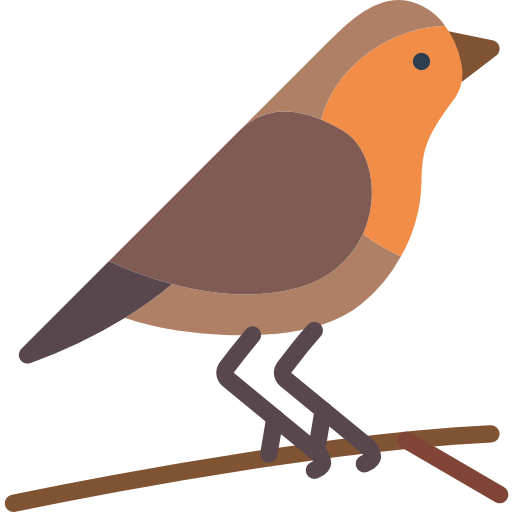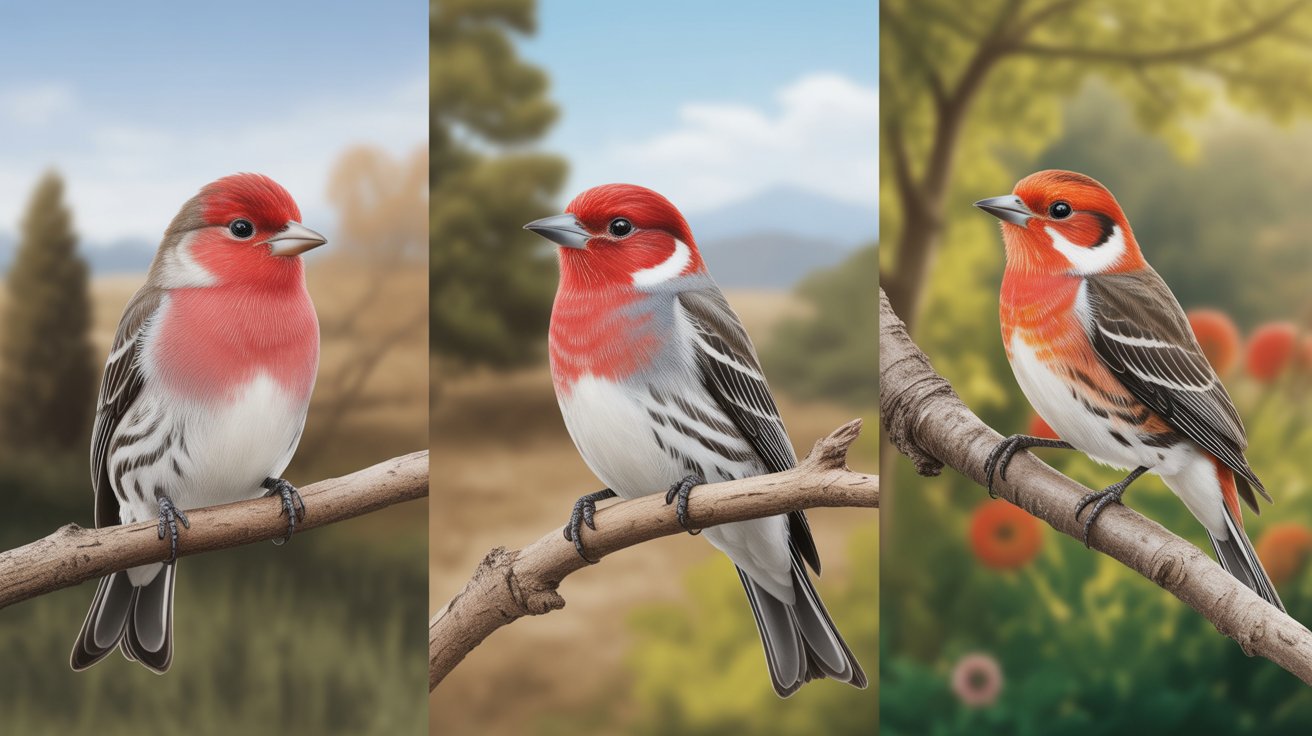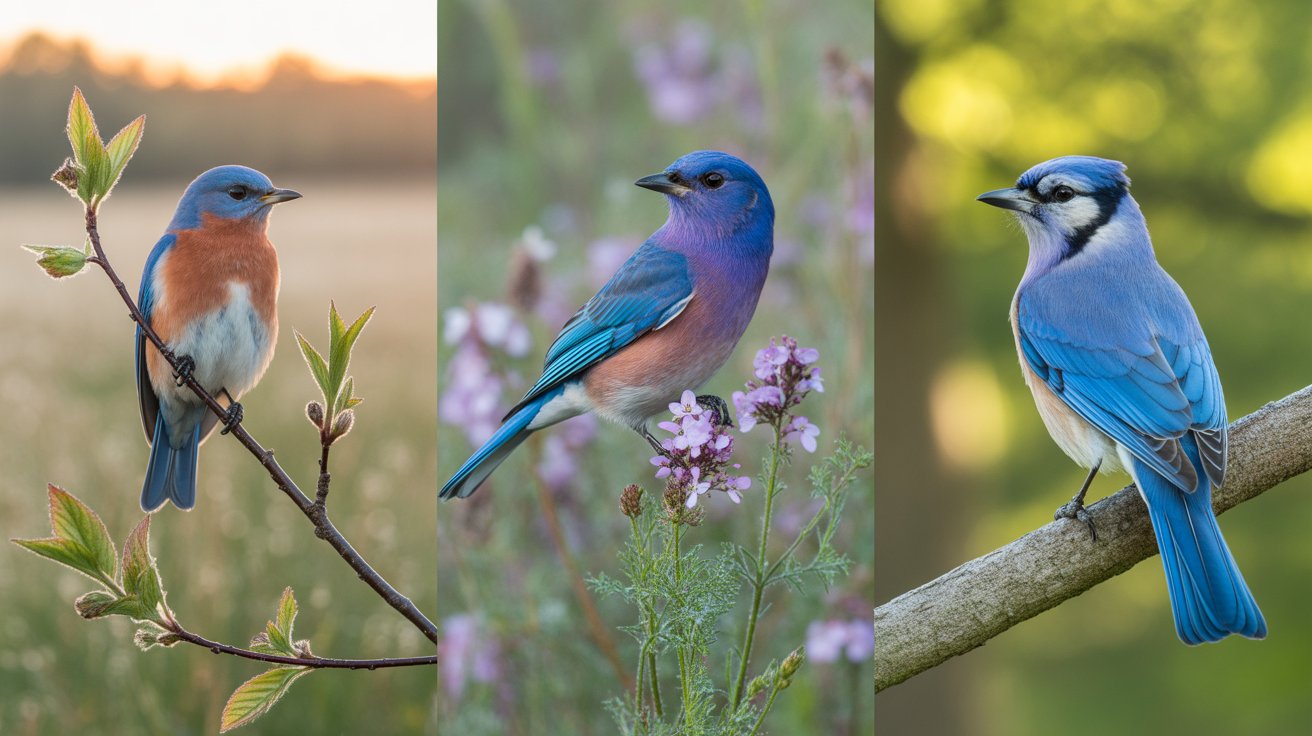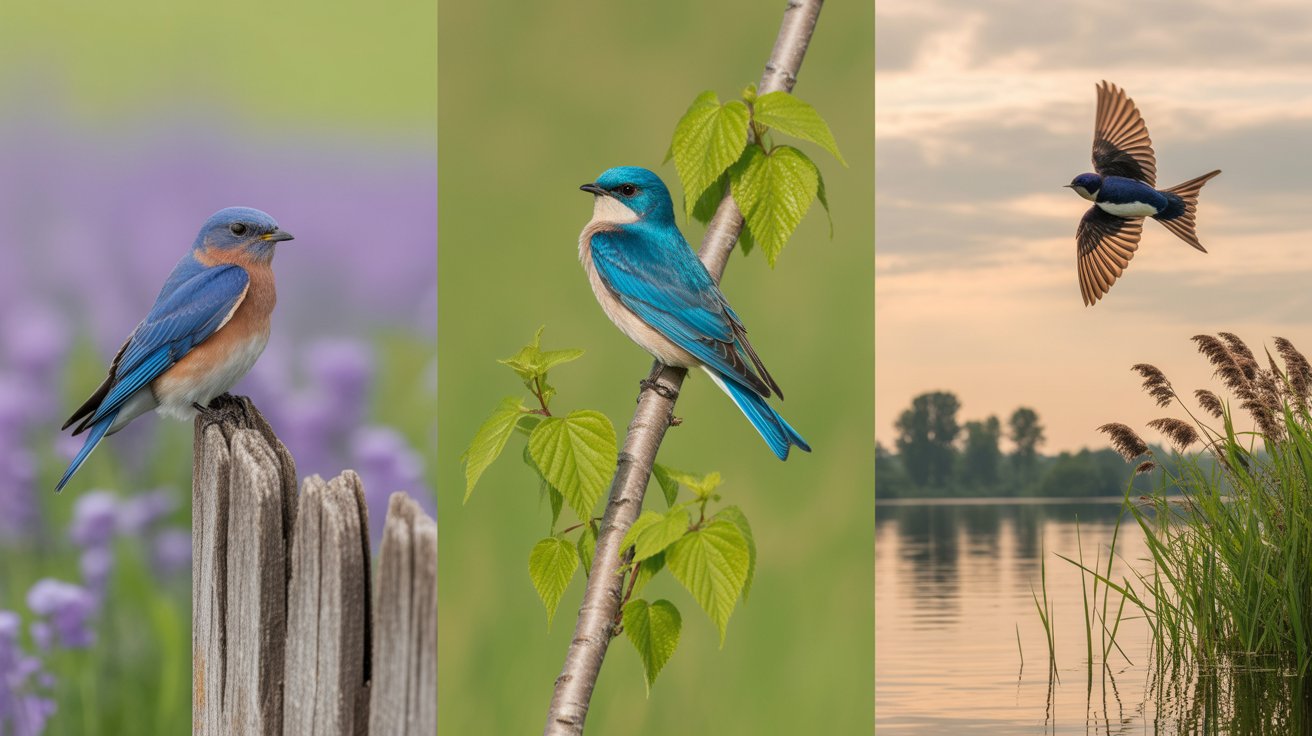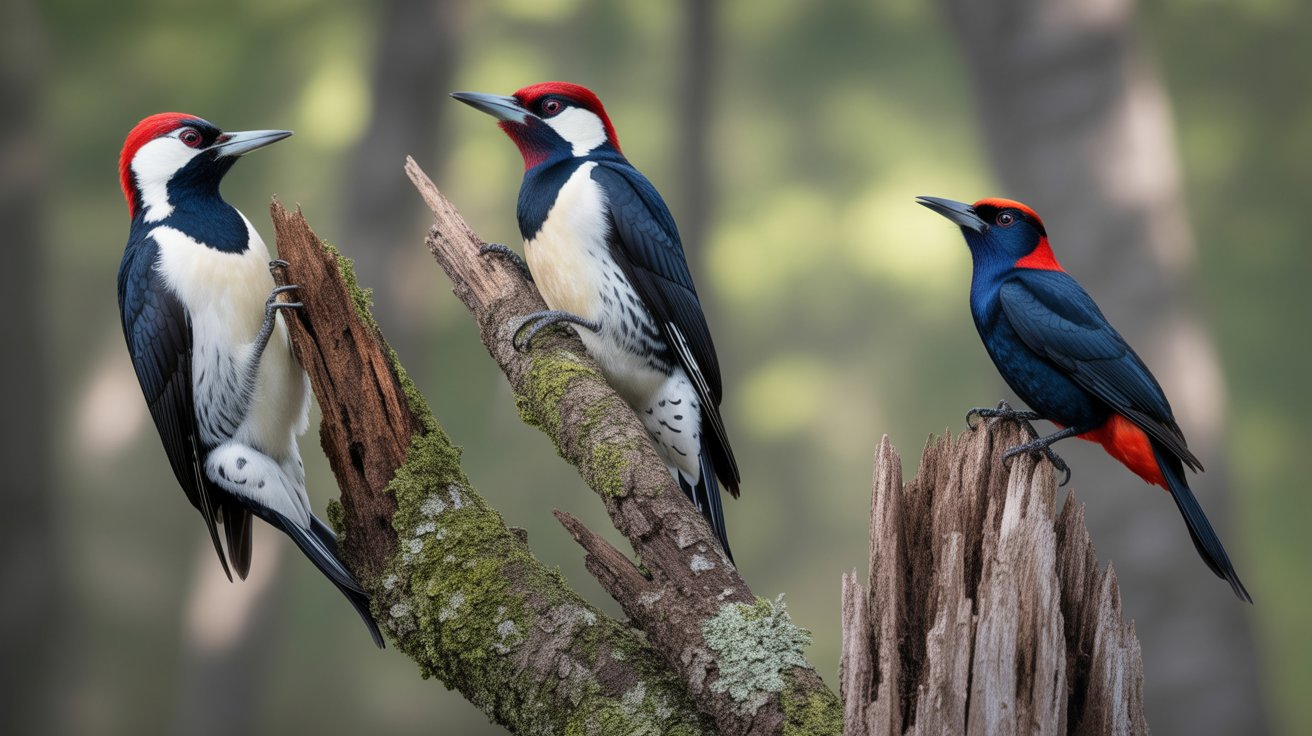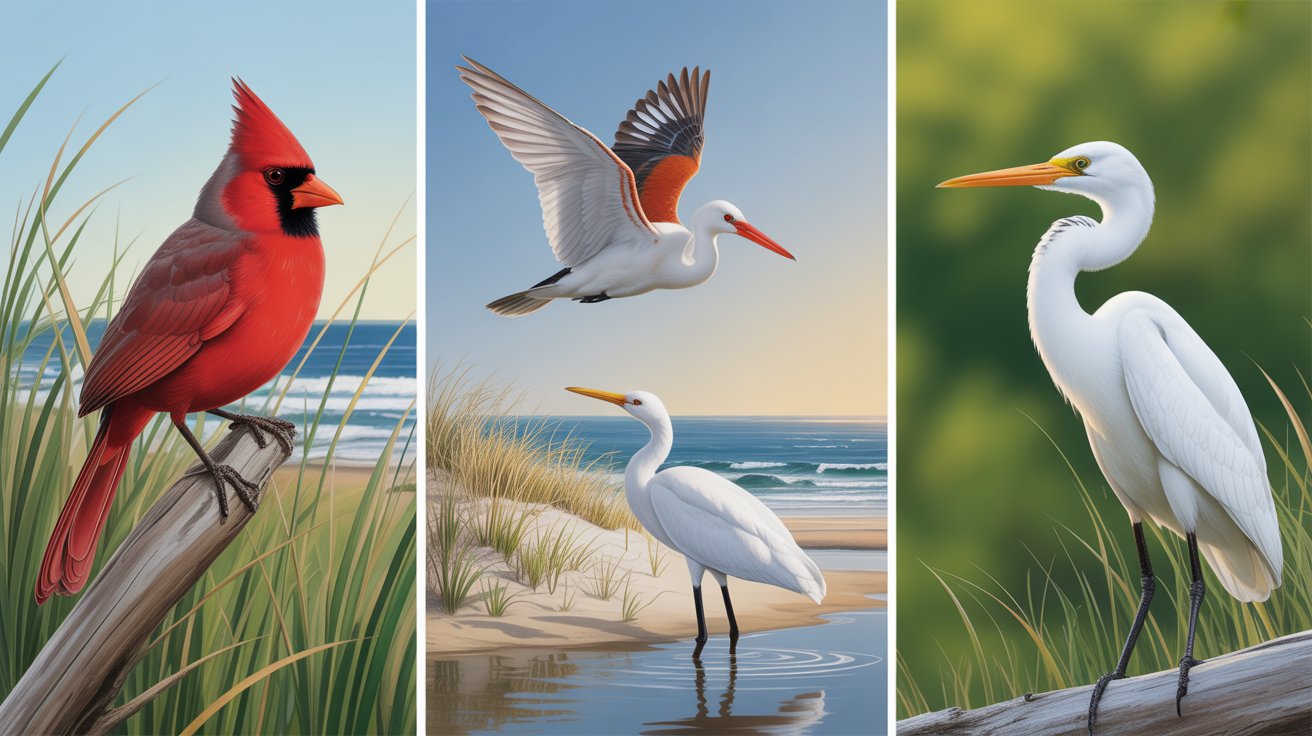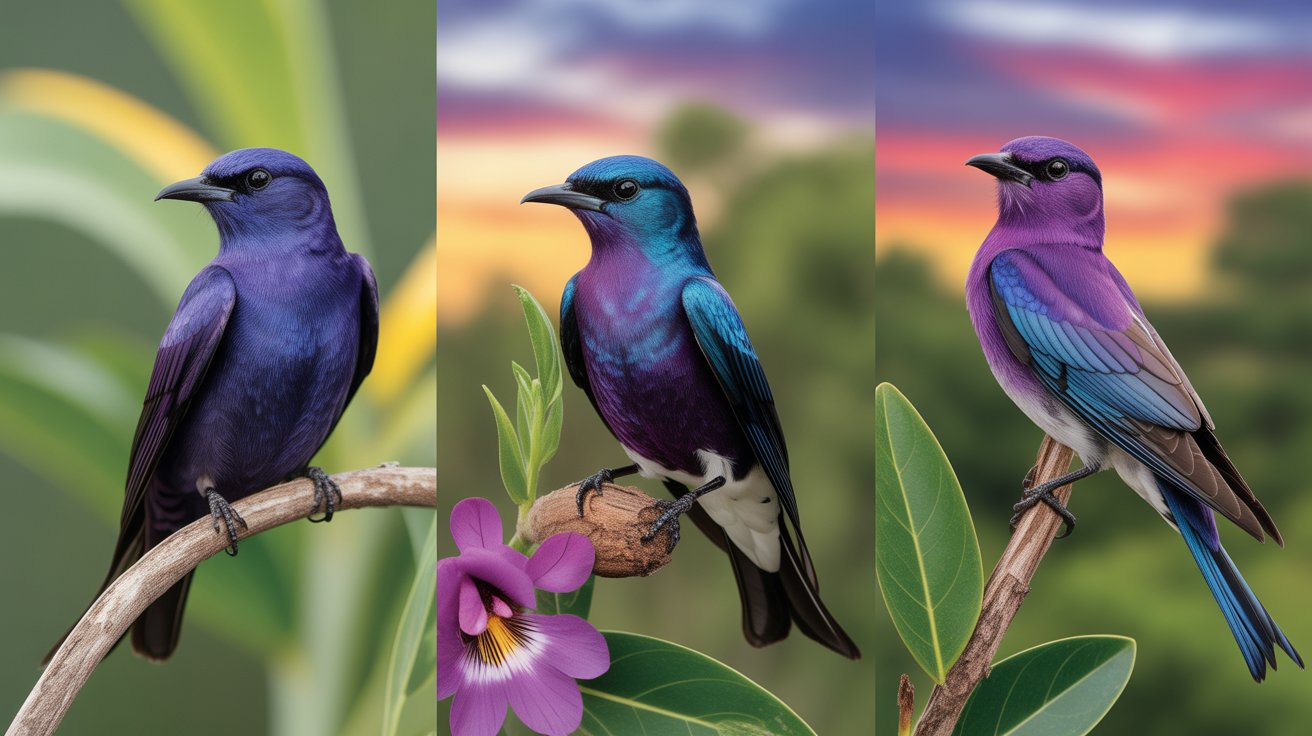Ever wondered why some birds have such massive beaks? Whether for feeding, attracting mates, or cracking open tough shells, a bird’s beak is more than just a quirky feature—it’s a vital tool for survival. And when it comes to birds with big beaks, nature certainly doesn’t hold back.
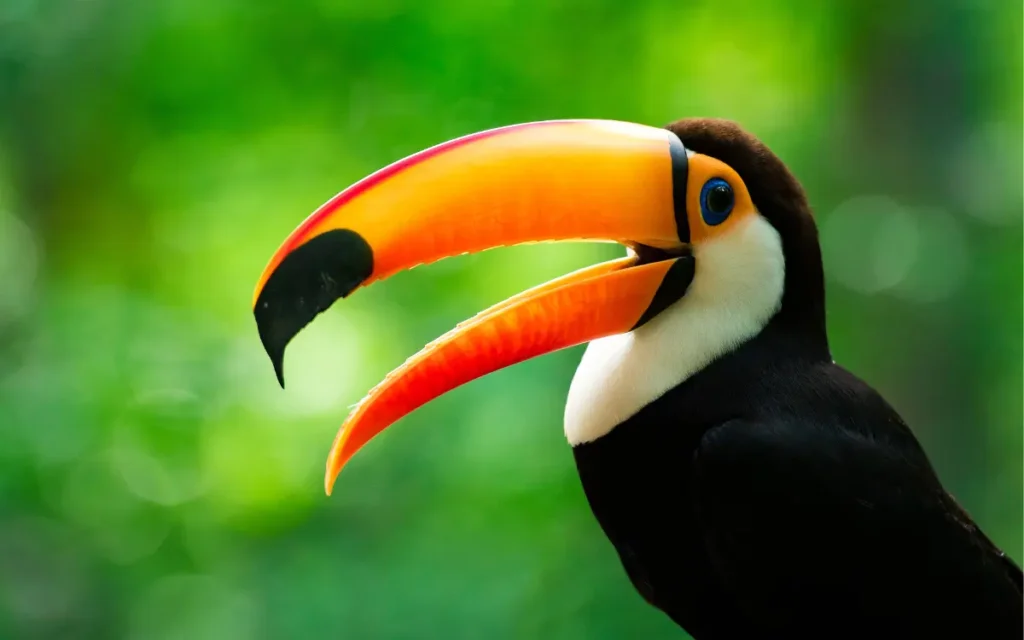
In this article, you’ll explore a fascinating variety of birds known for their oversized bills. Some use them like scissors, others like shovels, and a few even use their beaks as air conditioners! From tropical rainforests to Arctic islands, you’ll find that big-beaked birds are found all around the globe, each adapted to their environment in its own special way.
This list isn’t just about size—it’s also about style. Many of these birds have colorful, uniquely shaped beaks that grab attention at first glance. So if you’re a birdwatcher, a curious nature lover, or someone simply looking to learn more, you’re in for a treat.
Let’s dive into the world of birds with big beaks—you’ll be amazed by how diverse and creative nature can be.
17+ Birds With Big Beaks
Toco Toucan
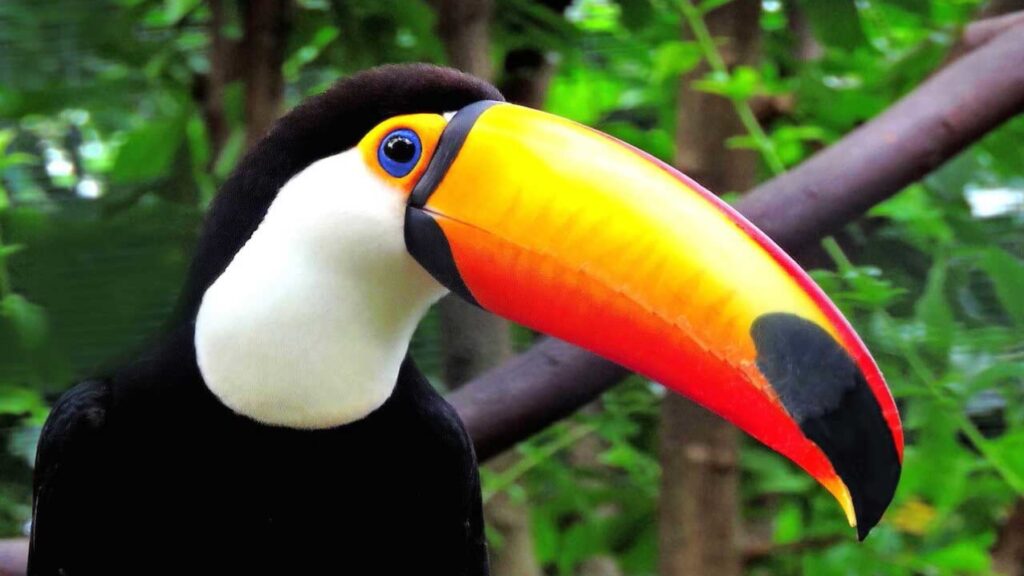
The Toco Toucan is probably the most iconic big-beaked bird you’ll ever see. With a vibrant orange bill nearly as long as its body, this bird is hard to miss. Despite its size, the beak is surprisingly light, made of keratin and supported by a foam-like structure.
- Scientific Name: Ramphastos toco
- Wingspan: 43–60 cm
- Length: 55–65 cm
- Weight: 500–860 g
Native to South America, the Toco Toucan uses its large beak to reach fruit on distant branches and regulate body temperature. The beak may look cumbersome, but it’s extremely functional. Their playful calls echo through tropical forests, and their bold colors make them a favorite among bird lovers.
Shoebill Stork
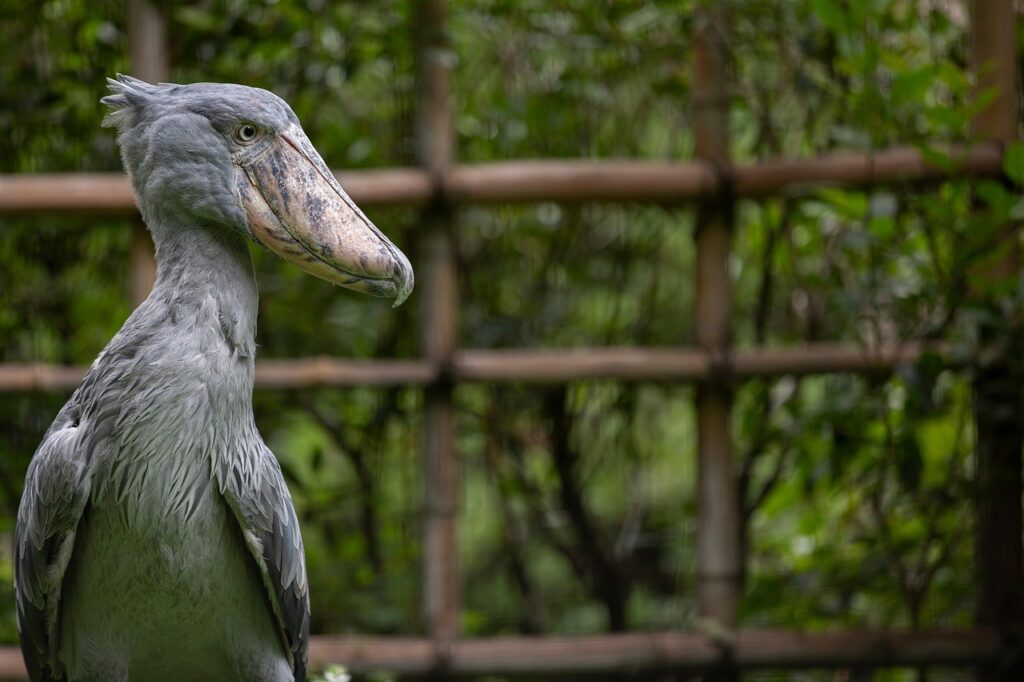
This prehistoric-looking bird is famous for its giant, shoe-shaped bill. The Shoebill Stork looks like something straight out of a fantasy film—stiff, silent, and statuesque.
- Scientific Name: Balaeniceps rex
- Wingspan: 230–260 cm
- Length: 110–140 cm
- Weight: 4–7 kg
Found in the swamps of central tropical Africa, the Shoebill uses its huge beak to hunt lungfish, eels, and even baby crocodiles. Its quiet, patient hunting method paired with its enormous bill makes it one of the most fascinating big-beaked birds in the world.
American White Pelican
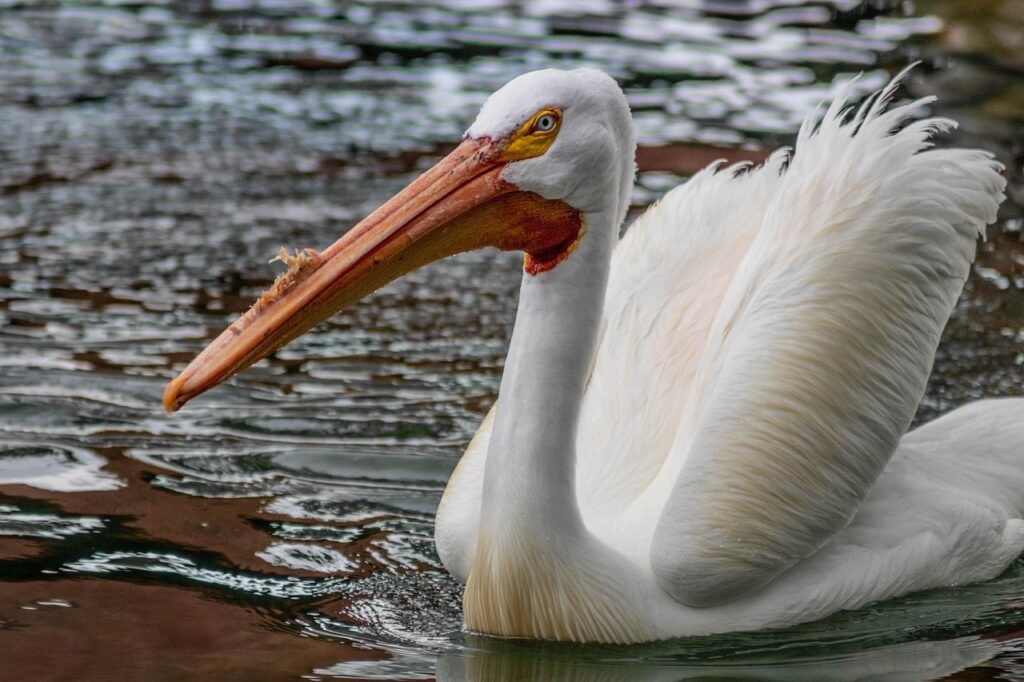
With a beak that can scoop up gallons of water, the American White Pelican has one of the most functional beaks of all. It’s a master of group fishing and uses its pouch to trap fish with precision.
- Scientific Name: Pelecanus erythrorhynchos
- Wingspan: 240–300 cm
- Length: 130–180 cm
- Weight: 4–7 kg
You’ll spot these majestic birds gliding in formation across lakes and coastal waters in North America. Their massive yellow-orange bill becomes even more pronounced during breeding season when they develop a horn-like growth on it.
Keel-Billed Toucan
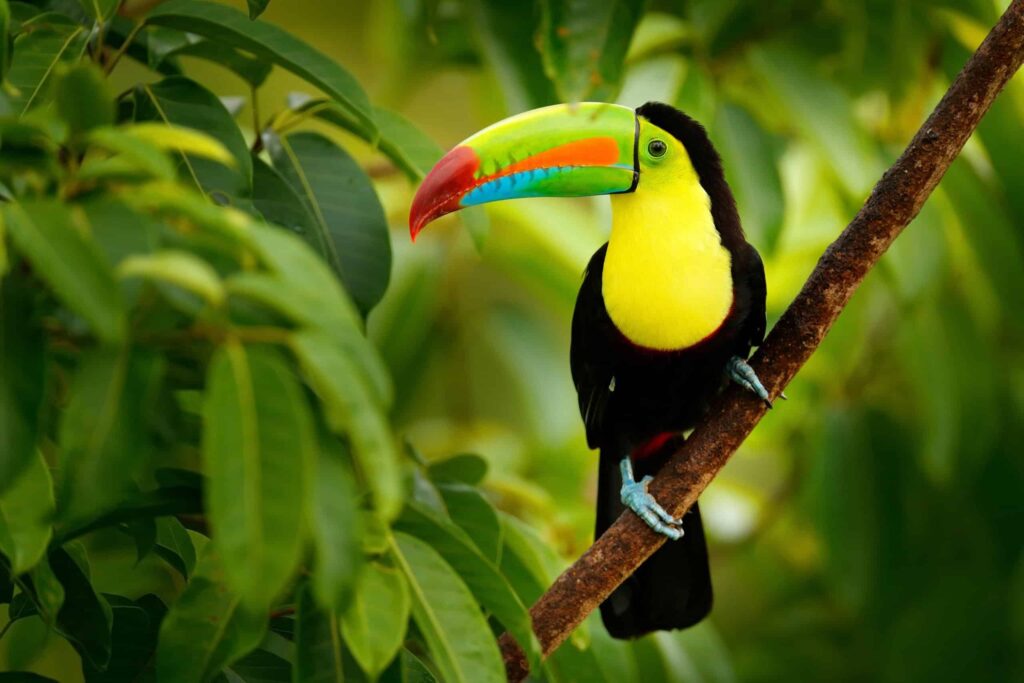
Bright, beautiful, and slightly comical-looking, the Keel-Billed Toucan sports a rainbow-colored beak that looks almost too large for its body.
- Scientific Name: Ramphastos sulfuratus
- Wingspan: 40–50 cm
- Length: 42–55 cm
- Weight: 380–500 g
Despite its flashy appearance, the beak is incredibly lightweight and functional. This bird is found in the tropical forests of Central and South America and is a master at maneuvering between trees in search of fruit, insects, and small reptiles.
Great Hornbill
The Great Hornbill is a giant of the Asian forests, known for its huge yellow-and-black beak topped with a casque—a hollow structure used for calls and display.
- Scientific Name: Buceros bicornis
- Wingspan: 150–180 cm
- Length: 95–120 cm
- Weight: 2.2–4 kg
Native to Southeast Asia, this bird’s enormous beak helps it pluck fruit and defend territory. The loud wingbeats and dramatic courtship rituals add to the charisma of this jungle heavyweight.
Southern Ground Hornbill
The Southern Ground Hornbill is a large terrestrial bird known for its deep calls and serious-looking beak. This beak is used to dig for insects, grab snakes, and even crack tortoise shells.
- Scientific Name: Bucorvus leadbeateri
- Wingspan: 120–180 cm
- Length: 90–129 cm
- Weight: 3–6 kg
Found in the savannas of sub-Saharan Africa, these birds are long-lived and often hunt in groups. Their bold black-and-red coloration adds to their striking presence.
Australian Pelican
The Australian Pelican boasts the longest beak of any bird—sometimes over 50 cm long! It uses this massive pinkish bill to scoop fish from the water with incredible efficiency.
- Scientific Name: Pelecanus conspicillatus
- Wingspan: 230–260 cm
- Length: 150–190 cm
- Weight: 4–7 kg
They’re found across Australia’s inland lakes, coastal shores, and rivers. Watching them work as a team to corral fish into shallows is a sight to behold.
Rhinoceros Hornbill
Named for the horn-like casque on top of its large beak, the Rhinoceros Hornbill is one of the most spectacular forest birds in Southeast Asia.
- Scientific Name: Buceros rhinoceros
- Wingspan: 150–180 cm
- Length: 90–125 cm
- Weight: 2–3 kg
Its loud call and elegant flight through the rainforest canopy are unforgettable. The massive beak helps the bird grasp fruit and fend off rivals during mating season.
Black Skimmer
The Black Skimmer is instantly recognizable by its uniquely shaped lower mandible, which is longer than the upper one—a perfect adaptation for catching fish while flying just above the water’s surface.
- Scientific Name: Rynchops niger
- Wingspan: 107–127 cm
- Length: 40–50 cm
- Weight: 300–450 g
These birds are often seen gliding low over coastal waters and estuaries in the Americas. Their beak acts like scissors, slicing through water to snap up small fish in one smooth motion. Despite their odd appearance, they’re elegant and efficient feeders.
Red Crossbill
The Red Crossbill has a curious crisscrossed beak, designed to pry open conifer cones and extract seeds. It may look deformed at first glance, but it’s actually a perfect tool for the bird’s specialized diet.
- Scientific Name: Loxia curvirostra
- Wingspan: 27–29 cm
- Length: 15–17 cm
- Weight: 26–39 g
These finch-like birds are found in pine forests across North America and Eurasia. Males are reddish, while females are more olive or yellowish. Their beaks allow them to access seeds that other birds simply can’t reach.
Atlantic Puffin
The Atlantic Puffin’s vibrant orange-and-yellow beak makes it look like a cartoon character, especially during breeding season when the colors intensify.
- Scientific Name: Fratercula arctica
- Wingspan: 47–63 cm
- Length: 28–30 cm
- Weight: 320–500 g
These “sea parrots” are skilled divers, using their wings to “fly” underwater. Their big beaks help them carry multiple fish at once, sometimes over 10 at a time, thanks to special spines on the upper palate.
Goliath Heron
The Goliath Heron is the largest heron in the world—and naturally, it has a beak to match. Long, sharp, and dagger-like, it’s ideal for spearing fish.
- Scientific Name: Ardea goliath
- Wingspan: 185–230 cm
- Length: 120–152 cm
- Weight: 4–5 kg
Found in African wetlands, these solitary hunters stand motionless for long periods before striking. The sheer size of this bird and its beak make it an awe-inspiring sight in the wild.
King Vulture
The King Vulture’s massive hooked beak is built for tearing flesh. As a scavenger, this bird uses its strong bill to rip open carcasses that other vultures can’t.
- Scientific Name: Sarcoramphus papa
- Wingspan: 120–180 cm
- Length: 67–81 cm
- Weight: 2.7–4.5 kg
Found throughout Central and South America, the King Vulture also sports one of the most colorful heads in the avian world. Its bright orange beak, warty skin, and intense eyes make it an unforgettable sight.
Sword-billed Hummingbird
The Sword-billed Hummingbird holds a unique title—it’s the only bird with a beak longer than its body (excluding the tail). This adaptation allows it to feed on long-tubed flowers that other hummingbirds can’t access.
- Scientific Name: Ensifera ensifera
- Wingspan: 15–18 cm
- Length: 13–14 cm (beak up to 10 cm)
- Weight: 10–15 g
Native to the Andes, this slender and elegant hummingbird relies on its extraordinary bill to survive. It even has to groom itself with its feet because its beak is too long!
Macaroni Penguin
The Macaroni Penguin has a large, strong beak used for catching krill and squid in the Southern Ocean. Paired with its vibrant yellow head feathers, it’s one of the most distinctive penguin species.
- Scientific Name: Eudyptes chrysolophus
- Wingspan: 72–100 cm
- Length: 70 cm
- Weight: 4–6 kg
Despite their slightly comical appearance, these penguins are strong swimmers and efficient hunters. Their beaks help them crush hard-shelled prey and dive deep for food.
Eurasian Spoonbill
The Eurasian Spoonbill lives up to its name with a flat, spatula-shaped beak that it sweeps side to side through shallow waters to catch fish and crustaceans.
- Scientific Name: Platalea leucorodia
- Wingspan: 115–135 cm
- Length: 80–93 cm
- Weight: 1.2–2 kg
This graceful bird is commonly found in wetlands across Europe, Asia, and North Africa. Its long legs and wide beak make it perfect for wading and feeding in muddy water.
Saddle-billed Stork
The Saddle-billed Stork has one of the most striking beaks in the bird world—long, red, black, and yellow, with a “saddle” at the base. It’s not just beautiful but also incredibly useful for spearing fish and frogs.
- Scientific Name: Ephippiorhynchus senegalensis
- Wingspan: 240–270 cm
- Length: 120–150 cm
- Weight: 5–7 kg
These elegant storks are found across sub-Saharan Africa, often in pairs. They stand tall and proud in shallow waters, using their bold beaks to catch and swallow prey whole.
FAQs
1. Why do some birds have such large beaks?
Large beaks can serve various functions—from reaching hard-to-access food to attracting mates or regulating body heat.
2. Does a big beak make a bird better at flying?
Not necessarily. While some birds with large beaks are excellent flyers, others are more terrestrial. The beak’s size is usually adapted to their feeding behavior, not flight.
3. Which bird has the longest beak in proportion to its body?
The Sword-billed Hummingbird holds the record for the longest beak relative to body size.
4. Are large beaks only used for eating?
No, beaks can also be used for defense, grooming, courtship displays, and even thermoregulation.
5. What is the lightest big-beaked bird?
Many toucans, despite their huge bills, are quite lightweight. The Keel-billed Toucan, for instance, weighs under 500 grams.
Conclusion
Birds with big beaks are among nature’s most fascinating creatures. Whether you’re admiring the bold toucan in the jungle or spotting a pelican by the lake, these birds are a true testament to how evolution tailors species to thrive in their environments. Their beaks aren’t just for show—they’re tools of survival, expressions of beauty, and sometimes even a passport to finding a mate.
Hopefully, this guide has helped you appreciate the wide variety and amazing adaptability of birds with large beaks. Keep an eye out—you never know when you might spot one of these beaked wonders in your own backyard or next birding adventure.
